Search Results for Tag: Tillerson
Deciding Arctic future in Fairbanks and Bonn

Can summits and negotiations halt Arctic melt?. (Pic: I.Quaile, Greenland)
It is hard to tell where the most influential conversations on the future of the Arctic are being held right now. Fairbanks would be the one where “Arctic” features most directly, at the summit of the Arctic Council. But the UN climate talks are also happening here in Bonn at the moment, and what was originally planned to be a fairly technical working meeting on implementing the Paris Agreement has been overshadowed by the question of whether the world’s second-biggest greenhouse gas emitter the USA might leave that Agreement, as threatened by President Trump.
The US climate question-mark
Either way, on both stages, the USA is at the centre of things. The election of Donald Trump and the establishing of an administration set on dismantling environmental protection and climate legislation has increased the size of the question mark hanging over the Paris goal of limiting global temperature rise to the two degrees – or rather 1.5 degrees – experts consider the absolute maximum to avoid dramatic feedback effects and potentially catastrophic climate change. And as far as the Arctic is concerned, even that would be too high. The icy north is already melting rapidly.
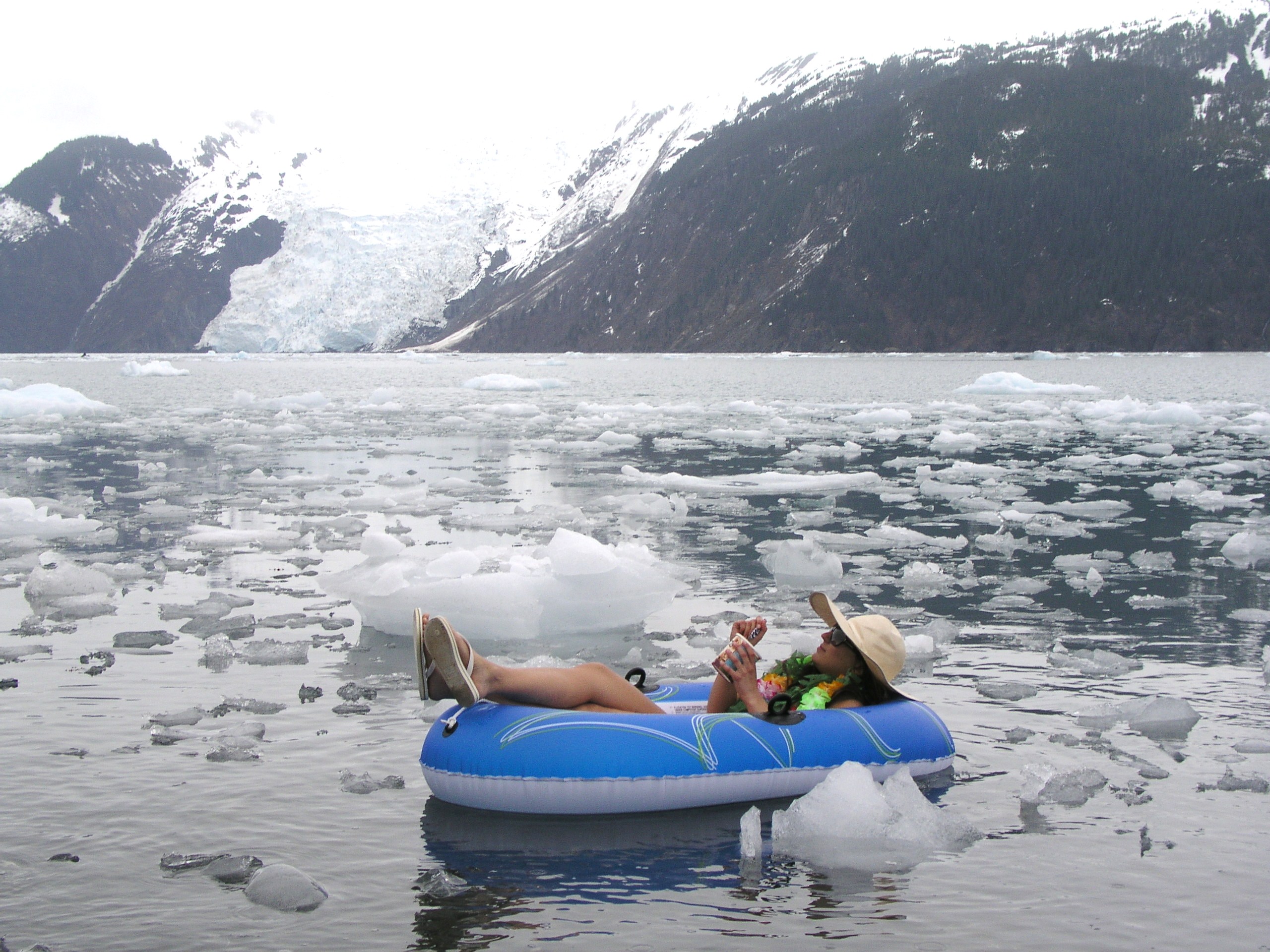
Soon no longer just fiction? (I.Quaile, Alaska)
When the talks started in Bonn on Monday, a preparatory meeting for this year’s climate mega-event, also to be held here this November at the headquarters of the UNFCCC, people were anxiously awaiting a meeting that was still scheduled to take place in the USA on Tuesday, when the President was to make the decision on the Paris Agreement. It has since been postponed. The fact that it has been rescheduled until after the G7 meeting later this month, which will be attended by President Trump, supports the view that there is more to this than just a collision of appointments. Paula Caballero, the Global Director of the Climate Program at the World Resources Institute WRI, is in Bonn for the talks, and she told me in an interview the US Cabinet is divided on this issue and President Trump still has to make up his mind. She is hopeful that good (business) sense will prevail and President Trump will be influenced by those – in his immediate surroundings and on the international stage – who point out it makes sense from all points of view to stay in that Agreement and promote the shift to renewable energies and emissions reductions. Will the G7 meeting convince Trump to stay in the Paris Agreement?
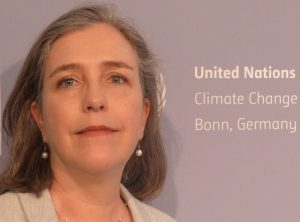
Caballero says it’s in everybody’s interests for the US to stick with Paris. (Pic. I.Quaile, Bonn)
Energy revolution from the bottom up?
You can read that interview, in which Ms Caballero outlines the ins- and outs of the US-Paris Agreement decision and stresses why it is in everybody’s interests for the US to stay in – on the DW website, or listen to it in the latest edition of Living Planet. One thing that is clear is that the momentum of the shift to renewable energies is picking up across the globe, regardless of the attempted rollback in the USA.
On Living Planet I also talk to two women in the programme who are pushing ahead with climate protection at the city level. Laura Kavanaugh and Maryke Van Staden work with ICLEI, a worldwide alliance of “local governments for sustainability”, which held a “Resilient Cities” forum, also here in Bonn, last week. Their message is quite clear. Cities around the globe are already feeling the impact of climate change now. Urgent action is required. The same is true of the Arctic, which is being hit so much harder and faster than the rest of the planet by climate warming.
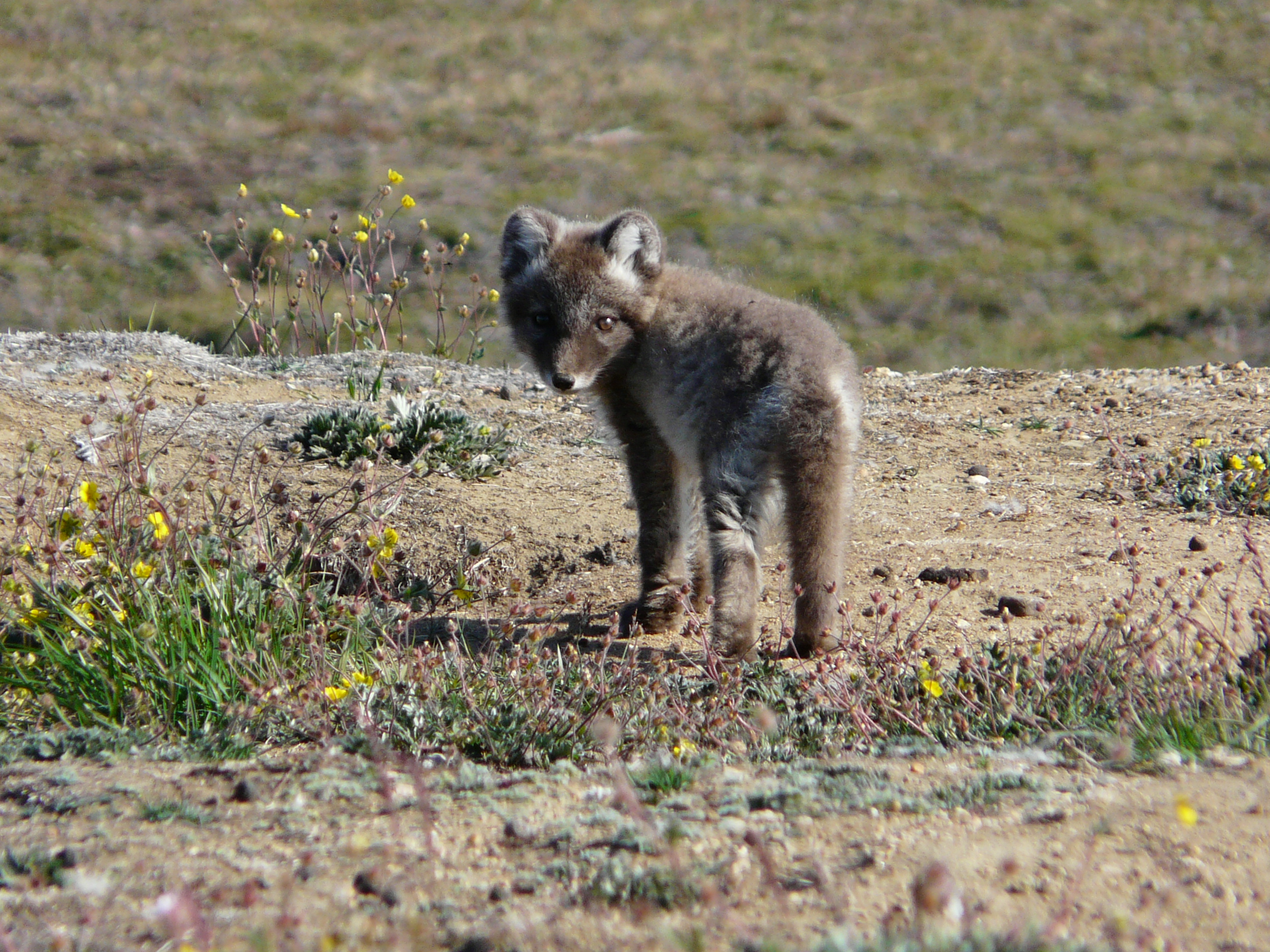
Will the Arctic fox survive in a warming climate? (Pic. I.Quaile, Greenland)
Ulterior motives
Clearly, progress to halt global warming is key to preserving the Arctic ice. That makes it all the more interesting that the Arctic Council summit in Fairbanks is being hosted by none other than the “new” US Secretary of State Rex Tillerson, as the USA has held the rotating Chairmanship of the Council for the last two years. Given that Tillerson is former CEO of the fossil fuels giant EXXON Mobil, there will be a keen interest in anything he says on or off the record, with regard to climate change and the prospect of future oil and gas drilling in the Arctic. Given that he is the first Republican Secretary of State to attend an Arctic Council summit, unsurprisingly there is much speculation about whether this indicates an increased US interest in the Arctic – and with what motives. Joel Plouffe has some interesting insights on that aspect.
The Trump administration is keen to boost Arctic drilling, hoping to benefit from easier access thanks to Arctic warming and decreasing sea ice cover. It is to be feared that this is the main reason for the upsurge in US interest in the region. The same applies to Russia.
The thing is, Lavrov didn't have to be there. The other #Arctic FMs weren't there. Just him, watching Tillerson's 2 min welcoming remarks. ? https://t.co/qeEdLGTWRg
— Heather Exner-Pirot (@ExnerPirot) May 11, 2017
Heather Exner-Poirot notes with interest that Russian foreign minister Sergei Lavrov was the only one of the Arctic foreign ministers to hear Tillerson’s speech at the reception in Fairbanks on Wednesday evening.
Cooperation – on climate science?
Finland will take over the helm of the Arctic organization at the end of today’s meeting. Finland has said it aims to protect the Arctic during its chairmanship by adhering to the Paris Agreement. Good luck Finland. You have an interesting couple of years ahead of you.
The theme of the US Chairmanship has been “One Arctic: Shared Opportunities, Challenges and Responsibilities”. The Council says this was reflected in much of the work completed by its six Working Groups and Task Forces over the last two years.
One key issue in focus is science. The “Agreement on Enhancing International Arctic Scientific Cooperation” is up for approval and signature in Fairbanks.
Since taking office, the Trump administration has taken drastic measures to cut budgets for climate science and environment protection. Not without reason did scientists takes to the streets around the world in protest. So there was a considerable feeling of relief when David Balton, the State Department’s assistant secretary for oceans and international environmental and scientific affairs and chair of the Senior Arctic Officials over the past two years announced on Monday that the US remained commited to Arctic climate change research.
“The US will remain engaged in the work the Arctic Council does on climate change throughout,” he told reporters.
“I am very confident there will be no change in that regard”.
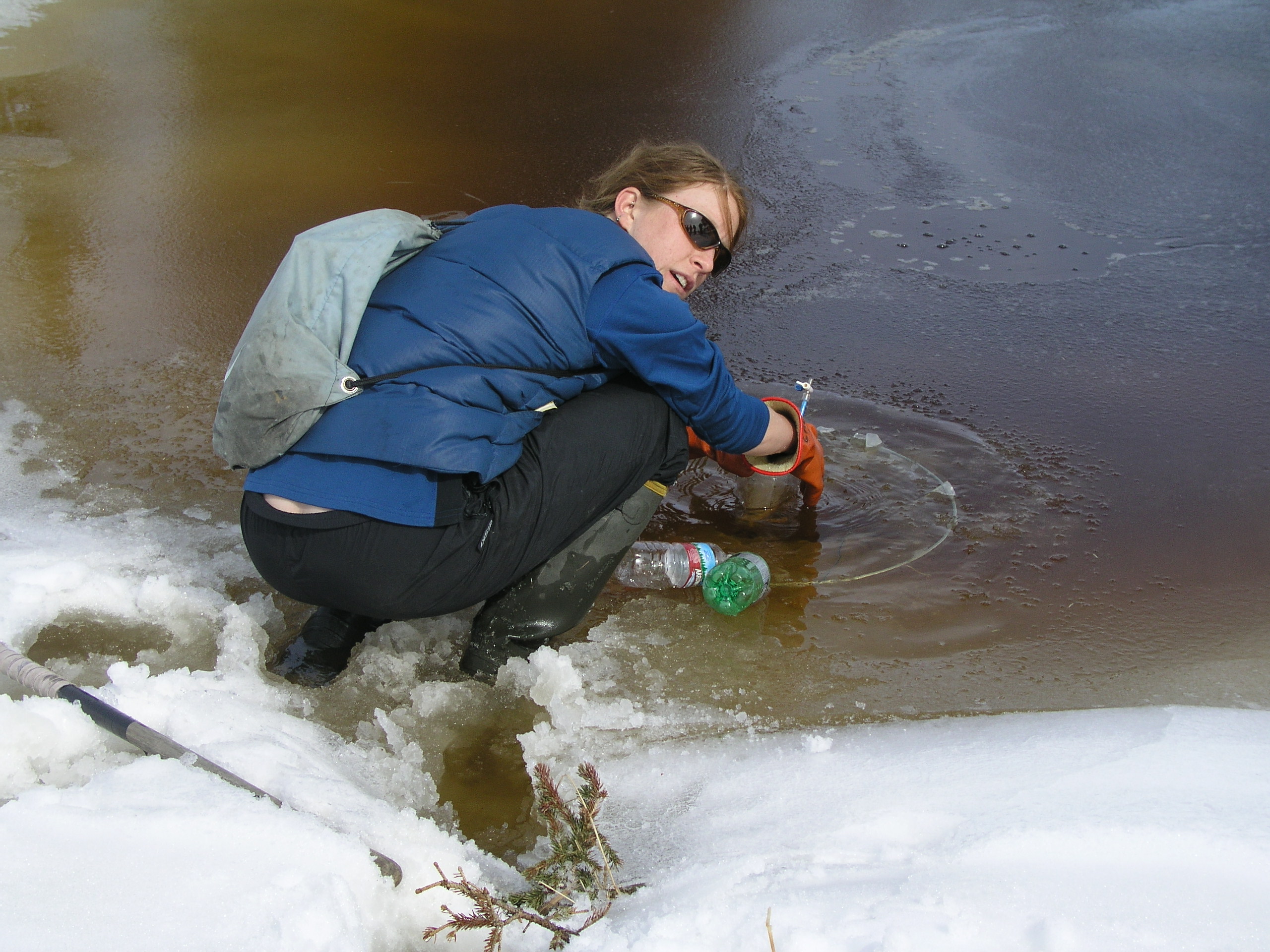
Scientific research is key. Collecting methane from melting lake in Alaska (Pic. I.Quaile)
To drill or not to drill…
It remains to be seen exactly what that will involve. It is hard to understand how Trump’s considering pulling the US out of the Paris Agreement can be reconciled with any commitment to protecting the Arctic from climate warming. It seems more likely that he is keen to benefit from the effects of climate change making the Arctic more accessible for commercial development. After all, scientific research in the Arctic can take many forms.
On April 27, the President signed an executive order aimed at rolling back restrictions on offshore drilling, including offshore Alaska. Barack Obama had issued orders closing off areas of the Arctic and Atlantic oceans to oil and gas drilling.
In the meantime, ten environmental and Alaska Native groups are suing the federal government over Trump’s new order. The groups are led by the League of Conservation Voters, Natural Resources Defense Council and Earthjustice. They say the order exceeded Trump’s authority under federal law.
In ADN, on May 3 Erica Martinson quotes Niel Lawrence, NRDC senior attorney:
“These areas have been permanently protected from the dangers of oil and gas development. President Trump may wish to undo that, and declare our coasts open for business to dirty energy companies, but he simply lacks the authority to do so under the law.”
Icy battle over future energy
While the legal wrangling continues – and the number of lawsuits involving climate change is on the increase – the Arctic continues to warm at a rapid rate.
The “Snow, Water, Ice and Permafrost in the Arctic” (SWIPA) report published in April indicates that the Arctic Ocean could be largely free of sea ice in summer in just two decades, and that projections of global sea level rise are underestimated.
The signs do not bode well for the Arctic. What happens in the region depends very largely on how fast the world is able to halt global warming. With the world’s second-biggest emitter set on exploiting the impacts of global warming in the region and reversing measures to protect environment and climate, the main question is how much influence the USA will actually have, and how resilient the transition to renewable energies will be.
Claudia Kemfert, a leading climate economist, recently published a new book in German about what she sees as the fossil fuels empire “striking back”, a campaign to discredit the green energy revolution. She warns against complacency and underestimating the influence of the fossil fuels lobby.
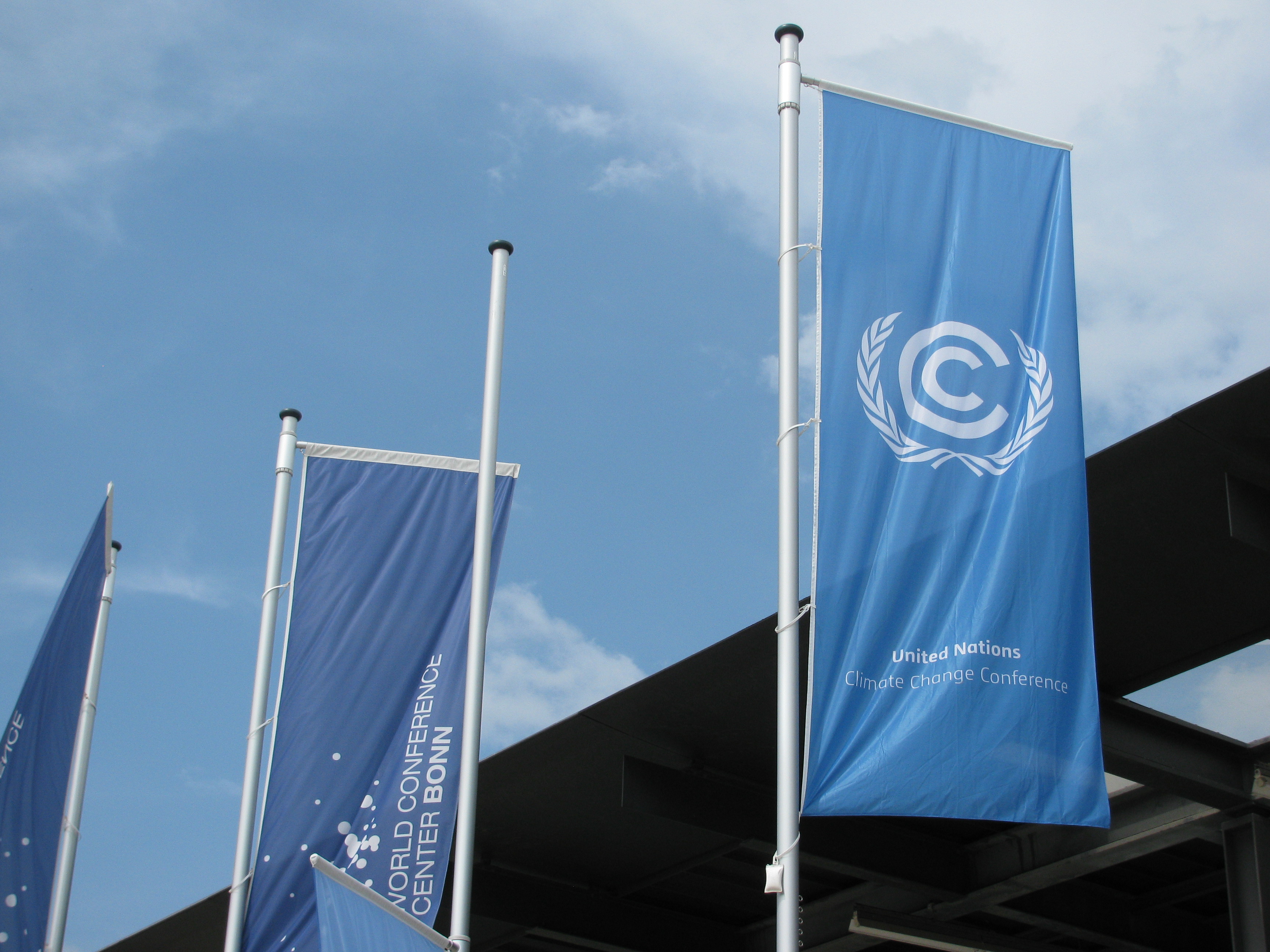
Bonn hosts the UN climate talks now and in November (Pic: I.Quaile)
At the UN talks in Bonn, the influence of those fossil fuel lobbyists on the negotiations has become a key topic of debate.
Government representatives with the common goal of achieving climate protection are not the only ones attending the talks. Alongside the environmental activists on the sidelines, lobbyists from various sectors are also there to promote their own interests. And these include industries which do not stand to profit from restrictions on emissions. All these groups are allowed to attend the international climate conferences hosted by the United Nations Framework Convention on Climate Change (UNFCCC).
Transparency needed
A recently published report from Corporate Accountability International, a United States-based nongovernmental organization, highlighted the strong power of trade and business organizations at climate-related events.
The fossil fuel industry is particularly well represented.
One group cited in the report is the National Mining Association in the US, which, the ngo notes, supports increased coal consumption and contributes to climate change.
The United States Chamber of Commerce is another regular participant. The largest lobbying group in the country – and the largest chamber of commerce in the world – is in favour of nuclear power, offshore oil production and drilling in the Arctic National Wildlife Refuge.
When it comes to the Arctic, the stakes have never been higher, politically, economically and of course environmentally.
Even the implementation of the most ambitious emissions reduction measures will not halt the increasing accessibility of the once virtually unnavigable Arctic Ocean in the near future. That guarantees that this will not be the last Arctic meeting to be attended by top-level politicians from the world’s most powerful nations. Meanwhile, the lobbyists will continue their attempts to prolong the fossil fuels era in spite of all the scientific evidence indicating the dangers it holds for the planet.
Perhaps the most important thing about Tillerson’s attendance in Fairbanks is the attention it draws to what is happening in the high north. And the UN climate process can only benefit from the transparency emerging over exactly who is advocating and influencing what in the negotiations.
















Feedback